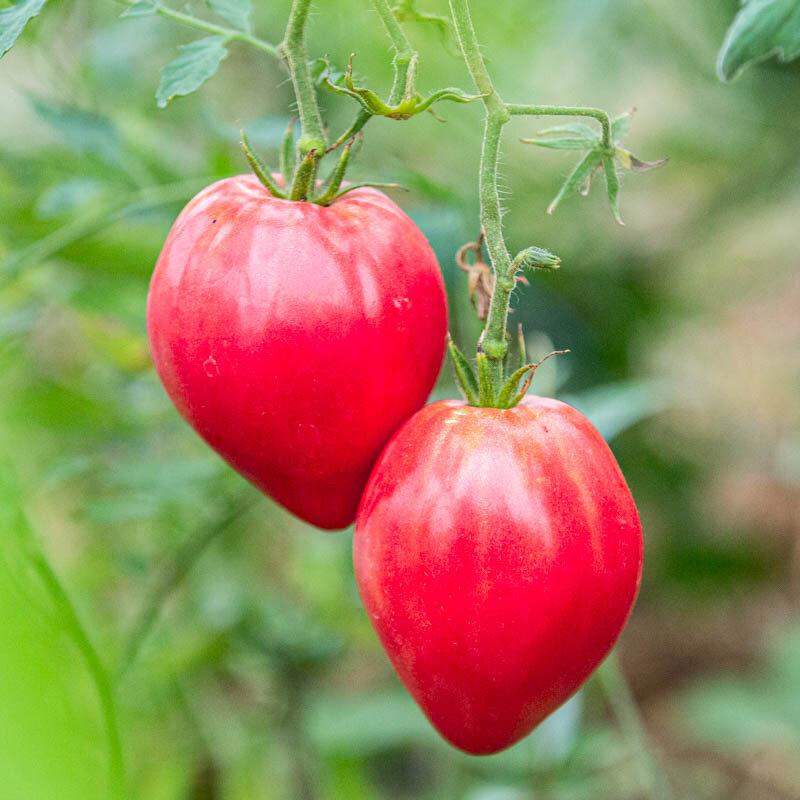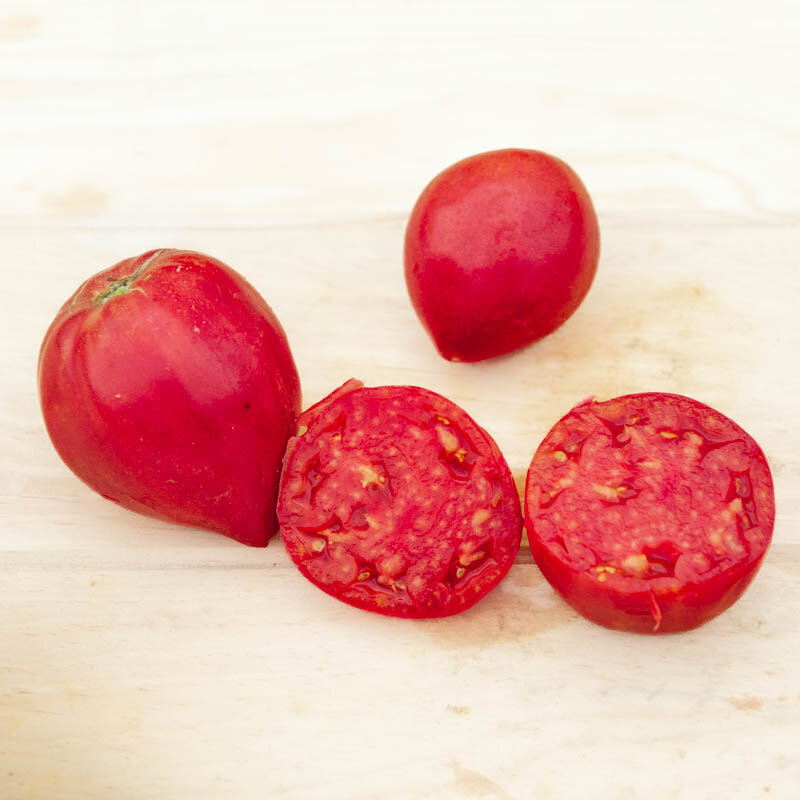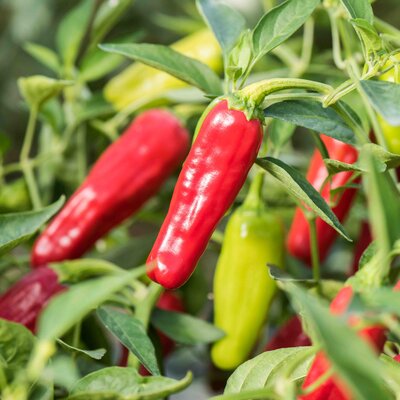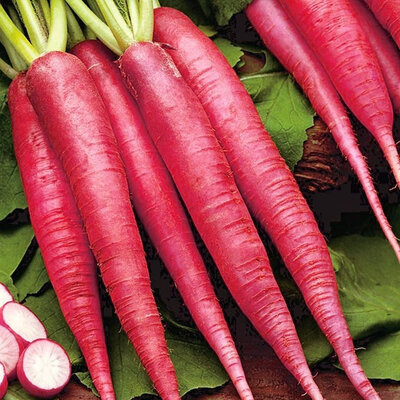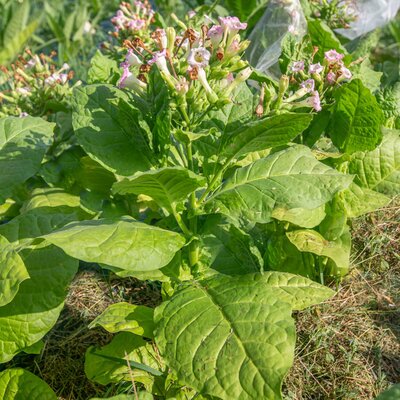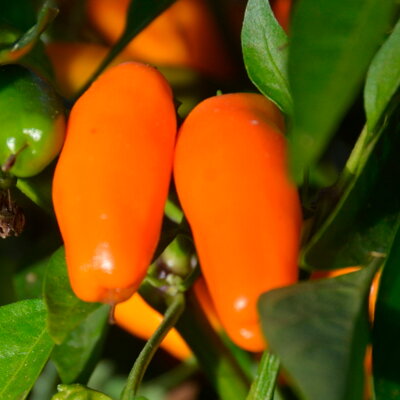
Anna Russian - Tomato
This old variety is adapted to cool climates. It has good vigor, fine, drooping foliage, and produces clusters of 3 to 4 large, reddish-pink "oxheart" fruits with excellent flavor.
Characteristics of the Anna Russian pink tomato
The Anna Russian pink tomato, Solanum lycopersicum, is an old mid-season variety from Russia. It was introduced in the 1989 Seed Savers Exchange Yearbook by Craig LeHoullier. Resistant to cool climates, this indeterminate-growing plant adapts to all types of soil. It produces large, reddish-pink, ox-heart-shaped fruits measuring around 7 cm in diameter and weighing up to 250 g. Their dense flesh contains few seeds, is sweet and juicy, with excellent flavor, and is enjoyed raw or cooked.
How to grow the Anna Russian pink tomato?
Russian tomato seedlings can be sown from the end of February in a greenhouse until April, in pots or in trays, under a very bright shelter and at a temperature between 16 and 20°C.
- Bury seeds 5-7 mm deep in potting soil;
- Water the seedlings, but do not over-water;
- Grow tomatoes indoors under a light source or in a nursery;
- Transplant into pots when the tomato reaches the stage of 2 to 4 true leaves. Bury the stem up to the two cotyledons to encourage root development and keep the plants protected from the cold;
- For 4 to 7 days before planting, take the tomato plants outside during the day to acclimatize them to outdoor conditions;
- As soon as the tomatoes are strong, transplant the whole clod into full sun after the last frosts. Plants intended for greenhouses can be planted when the temperature inside no longer falls below 10°C;
- Maintain a minimum distance of 50 cm between plants, burying the stem up to the first leaves;
- Water the tomato abundantly when planting in the vegetable garden.
Although vigorous, this Russian variety can be affected by diseases such as mildew (a fungus generally caused by excess humidity) and blight.s d'humidité) and apical necrosis (due to mineral deficiencies caused by irregular watering of the plants). To avoid these problems, be sure to water the plants regularly and avoid wetting the tomato leaves. Organic preventive treatments are also available: nettle purin, comfrey, etc.
We recommend planting companion plants such as tagetes or basil between tomatoes to repel pests.
How often should I water my tomato plants?
To avoid fungal diseases such as mildew and blossom end necrosis, follow these tips:
- Water tomato plants regularly, but not excessively;
- Water at the end of the day, when the sun's rays are no longer to be feared;
- Avoid wetting foliage and flowers, and water at the foot of the plants;
- Mulch the soil to conserve moisture.
Do tomato plants need pruning?
This variety of tomato has an indeterminate growth habit. The stem will continue to elongate, forming numerous lateral branches, all of which produce flowers.
Pruning is not recommended. Pruning can cause open wounds to the plants and encourage the spread of disease. For staking, these bulky plants can be kept in cages or on ladders.
When to harvest Anna Russian pink tomatoes?
This mid-season variety is harvested from June to October. This crop offers an abundance of fruit per plant in one season. With its dense, juicy flesh and sweet, slightly musky flavor, this Russian tomato is delicious in sauces, coulis or stuffed in the oven.
These products may also be of interest to you
Sow in pots at a temperature of between 16 and 20°C, under a well-lit shelter, 5 weeks before planting. After the last frosts, transplant the whole clump into the ground at a minimum distance of 50 cm, burying the stem up to the first leaves. Water abundantly at the time of planting.
Solanaceae need light and heat to produce. In cool climates, it's best to grow them under cover and, depending on the soil, water them regularly.
Solanum lycopersicum
From 95 to 250 g
35 seeds
From 6 to 8 cm
Russia
Inconnue
This old variety was sent to Craig LeHoullier in 1989 by Brenda Hillenius of Oregon, who had received the seeds from her grandfather Kenneth Wilcox, who in turn had received them from a Russian immigrant. Craig LeHoullier introduced this variety in the Seed Savers Exchange Yearbook of 1989.
Seed Savers Exchange



